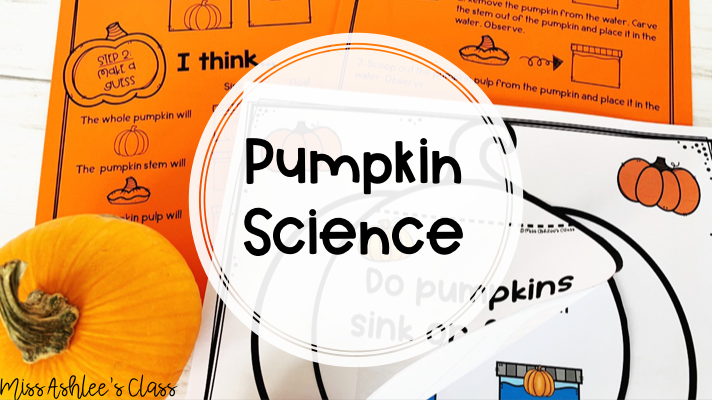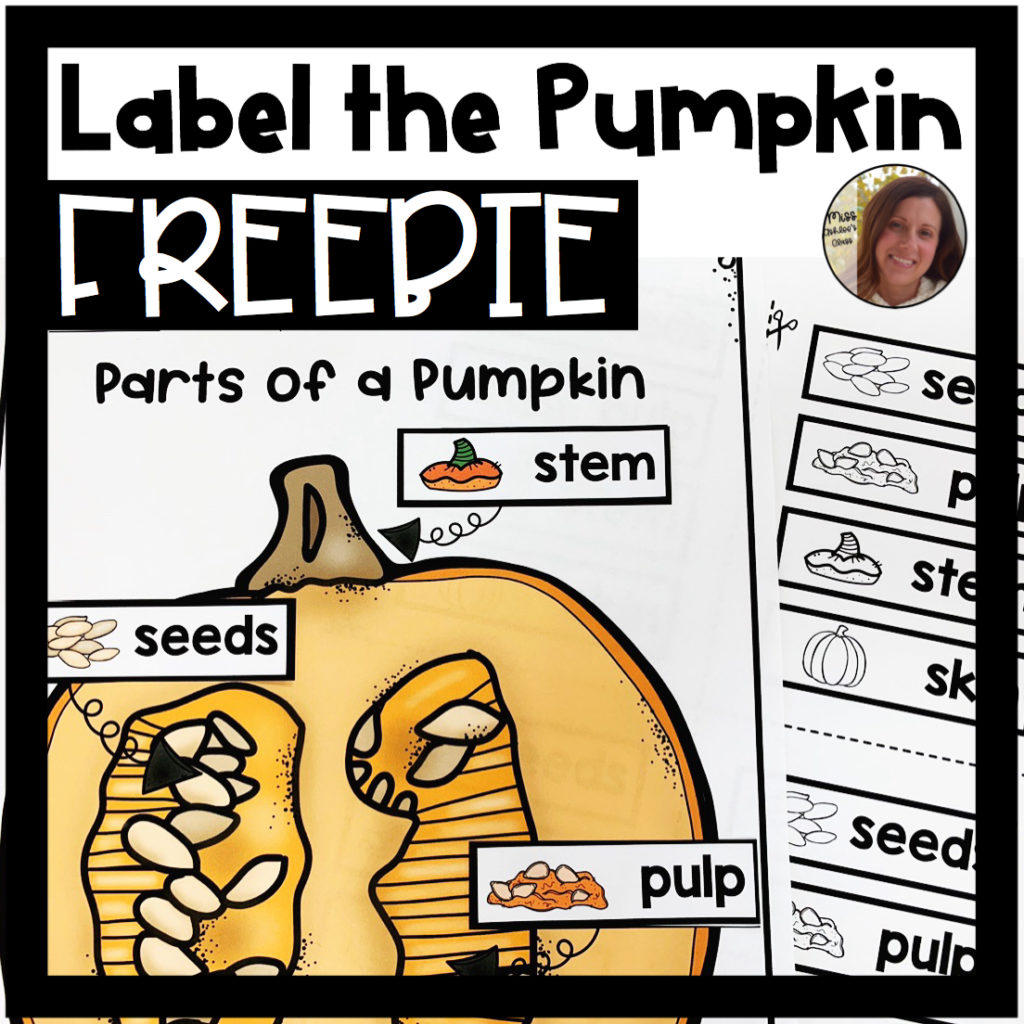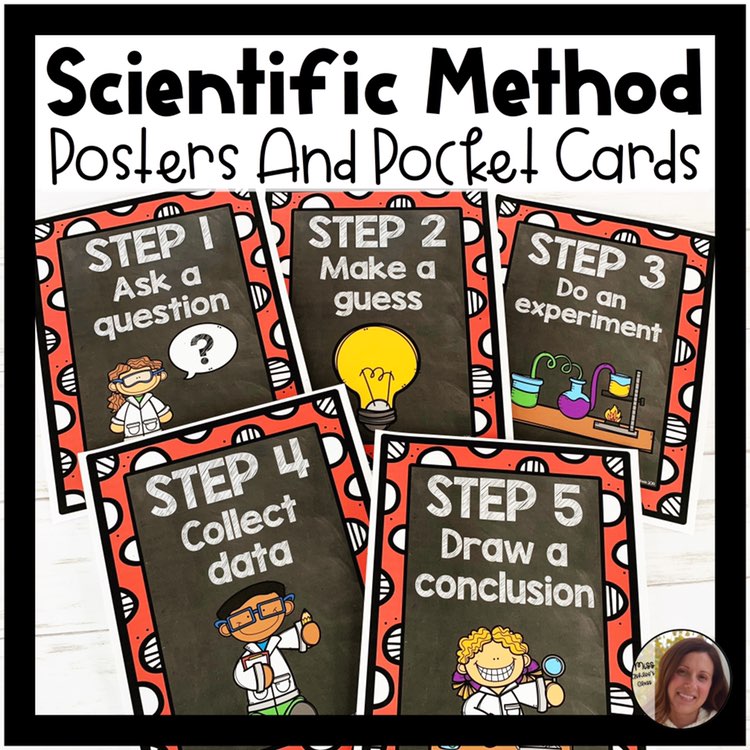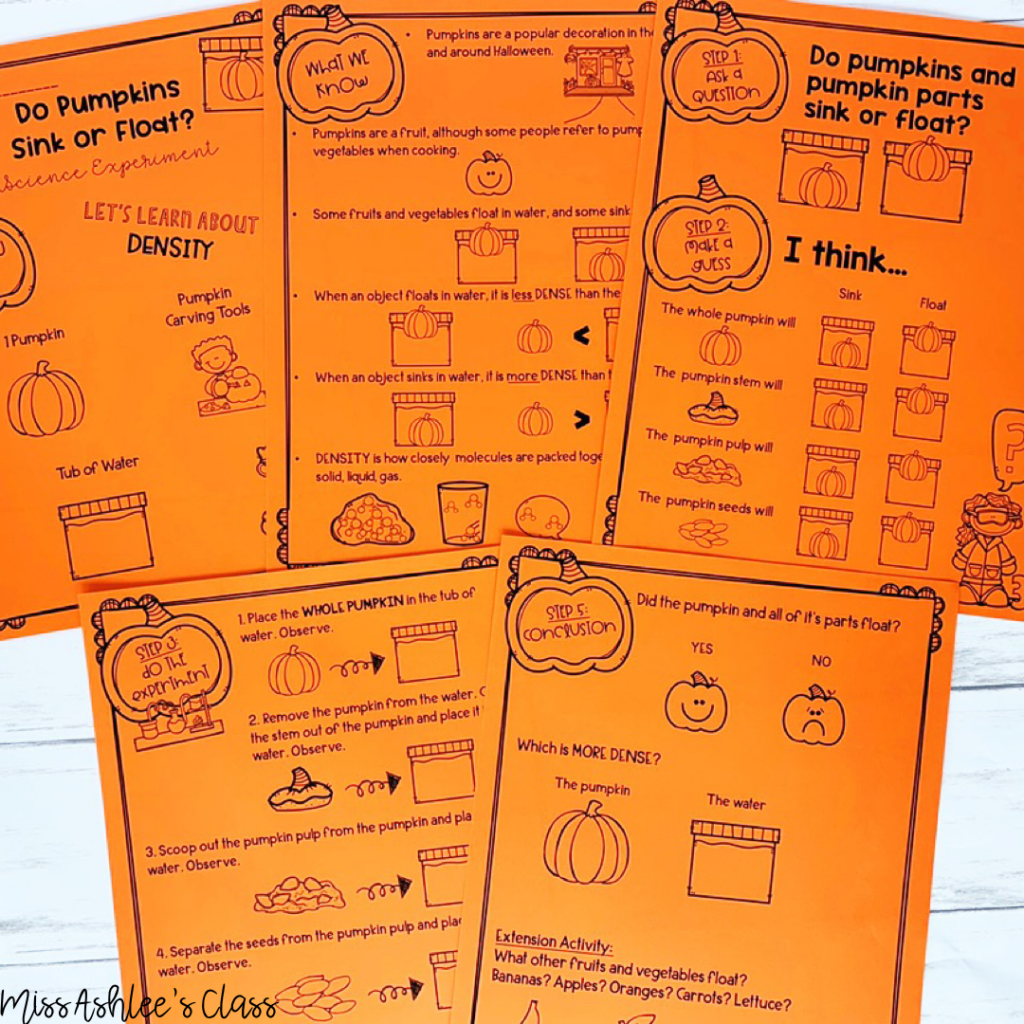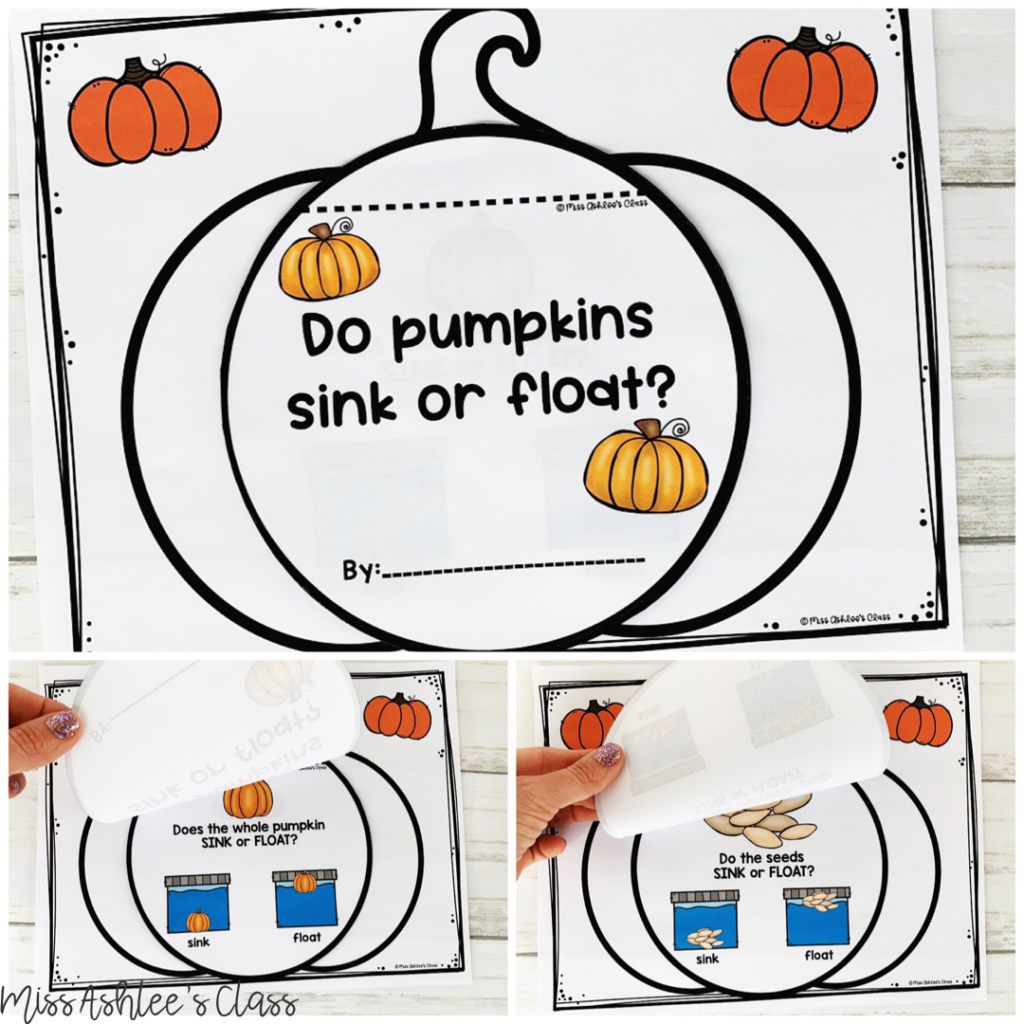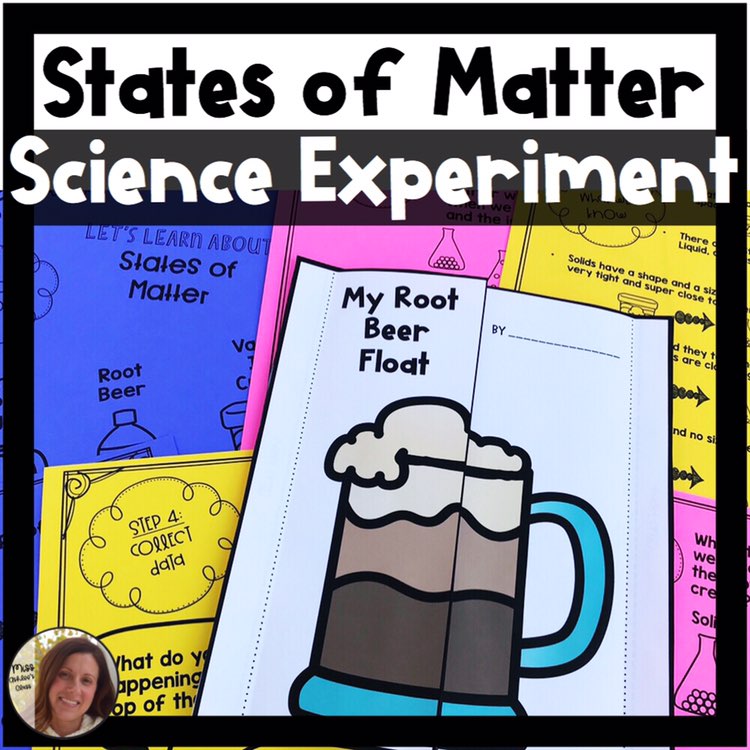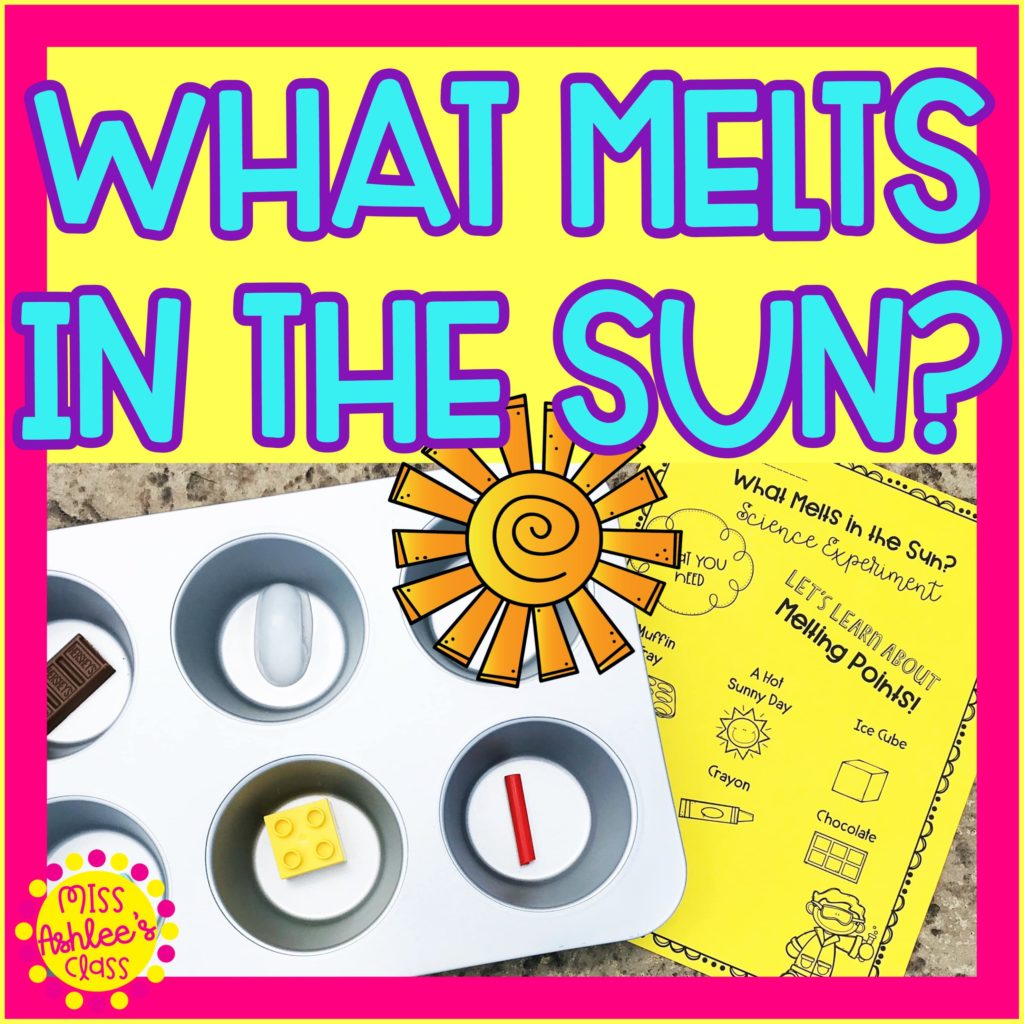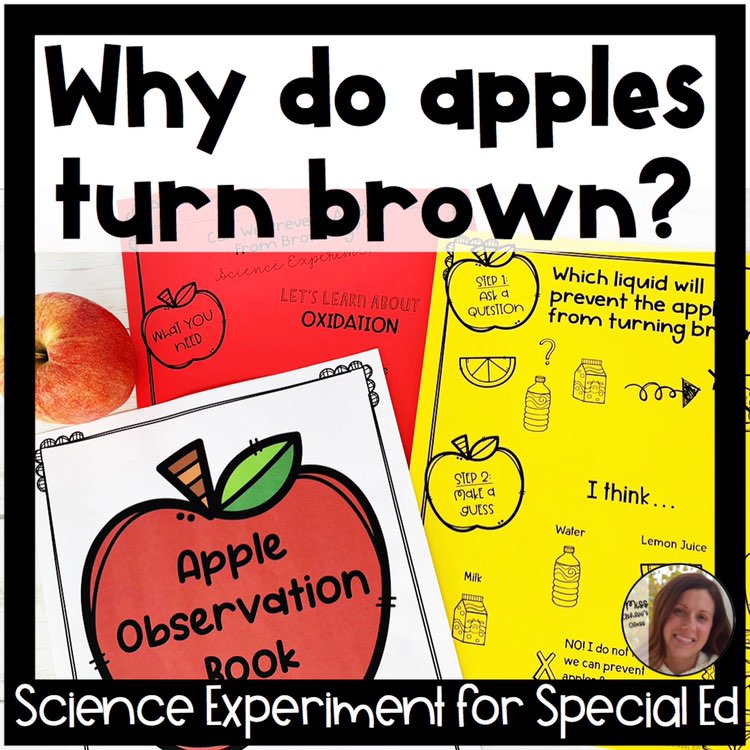Fall is always a good time to do some fun experimenting with pumpkins! We happen to be right in the middle of our Science Fair Unit, so it seems like a great time to do a fun experiment with “sink or float.” Why not start with a pumpkin?! I also did this experiment at home with my own kids and they had a blast!
First, we had a big discussion about why objects sink or float. Then, we took turns sharing about things we have seen sink or float in our own experiences. We also watched the video “Sink or Float” on YouTube by SciShow Kids.
We discussed the different parts of a pumpkin. CLICK HERE for a Label the Pumpkin Parts Worksheet FREEBIE. Then we made predictions about which parts of the pumpkin will sink or float. Then we followed the 5-Step Scientific Method to conduct our experiment. CLICK HERE for a FREEBIE set of Scientific Method Posters I use in my classroom.
What We Know:
Pumpkins are a popular decoration in the Fall and around Halloween.
Pumpkins are a fruit, although some people refer to pumpkins as vegetables when cooking.
Some fruits and vegetables float in water, and some sink.
When an object floats in water, it is less DENSE than the water.
When an object sinks in water, it is more DENSE than the water.
DENSITY is how closely molecules are packed together in a solid, liquid, or gas.
What We Need:
A pumpkin, some pumpkin carving tools, and a big tub of water
We used a medium-sized pumpkin and it worked great!
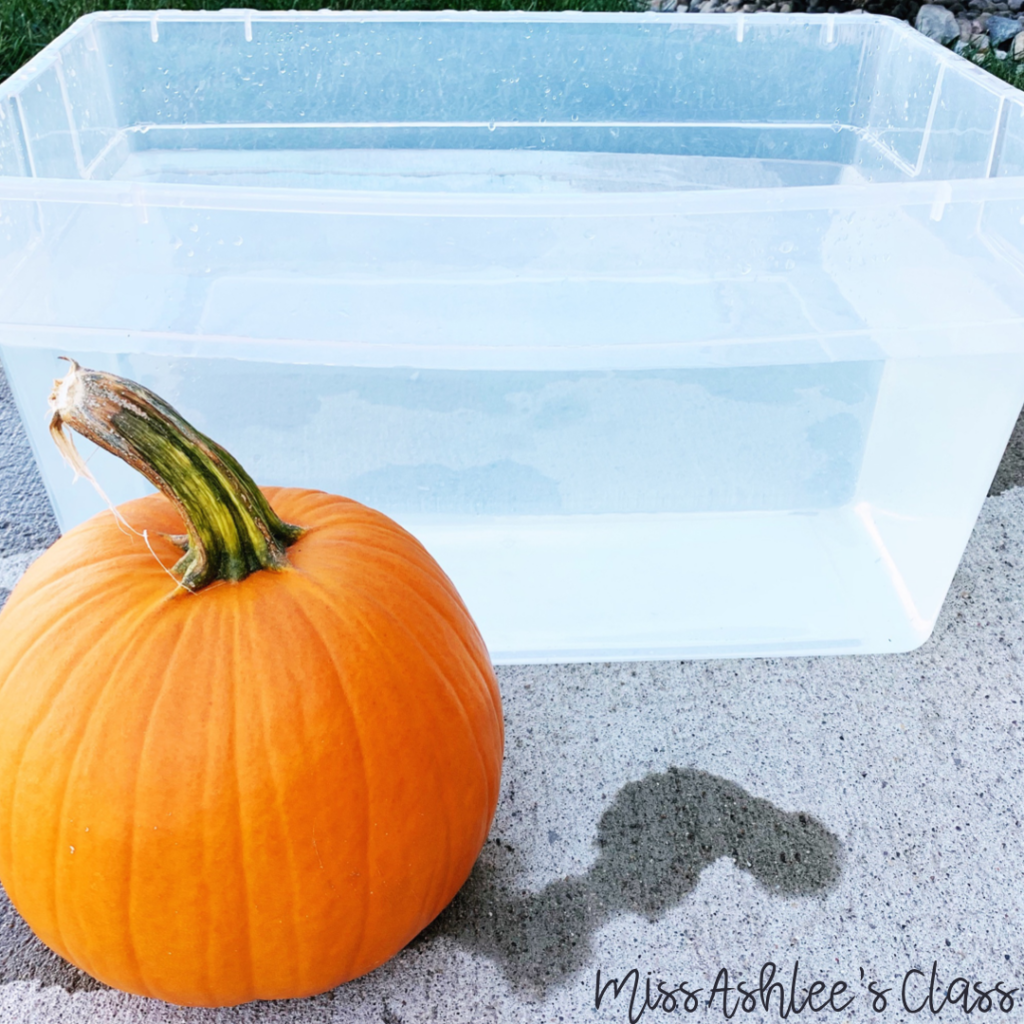
Let’s Do a Pumpkin Experiment!
CLICK HERE for a picture-supported direction packet I used in my classroom.
Step 1: Ask a Question
Do pumpkins and pumpkin parts sink or float?
Step 2: Make a Guess
We made some predictions about the whole pumpkin, the stem of the pumpkin, the pumpkin pulp, and the pumpkin seeds.
Half of my class predicted everything would sink because some pumpkins are soooo heavy 🙂 The other half predicted pumpkins would float 🙂 Let’s find out!
Step 3: Do the Experiment
Place the WHOLE PUMPKIN in the tub of water. Observe.
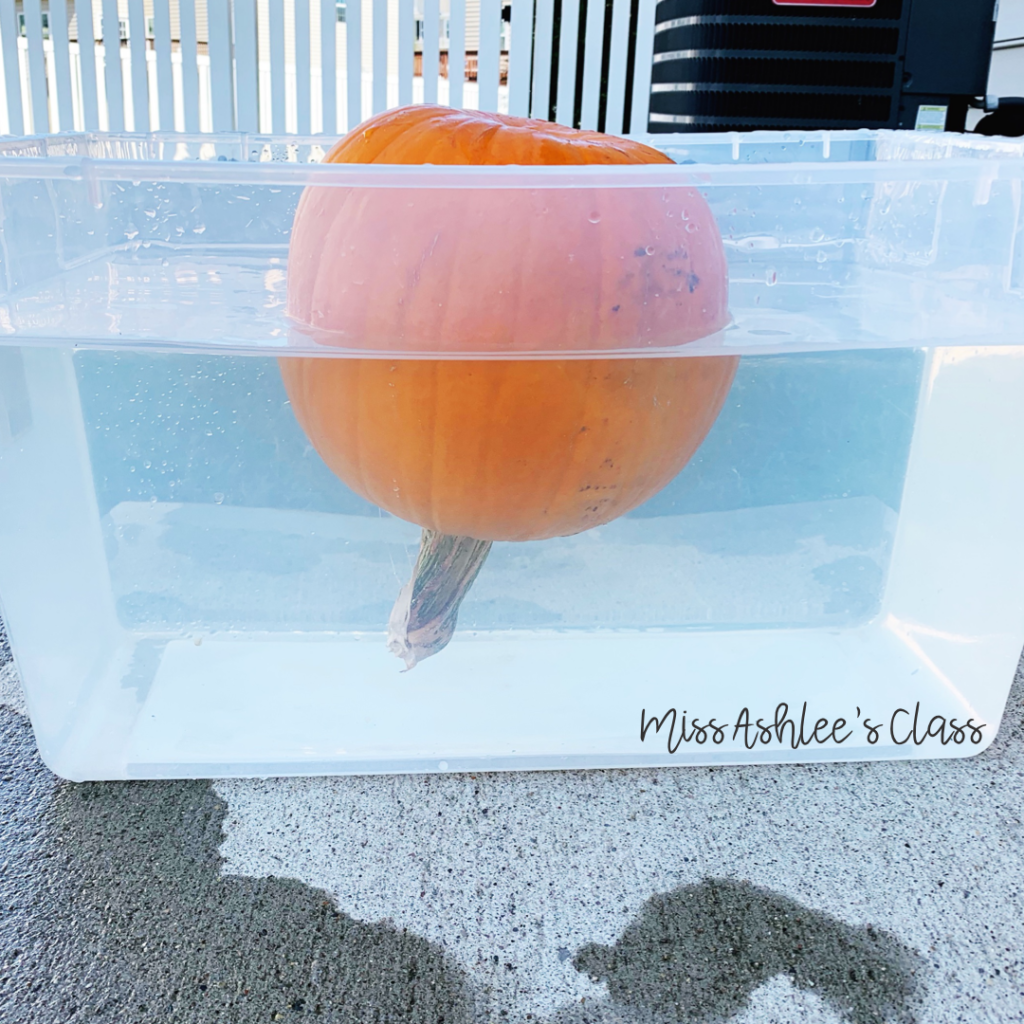
Remove the pumpkin from the water. Carve the stem out of the pumpkin and place it in the water. Observe.
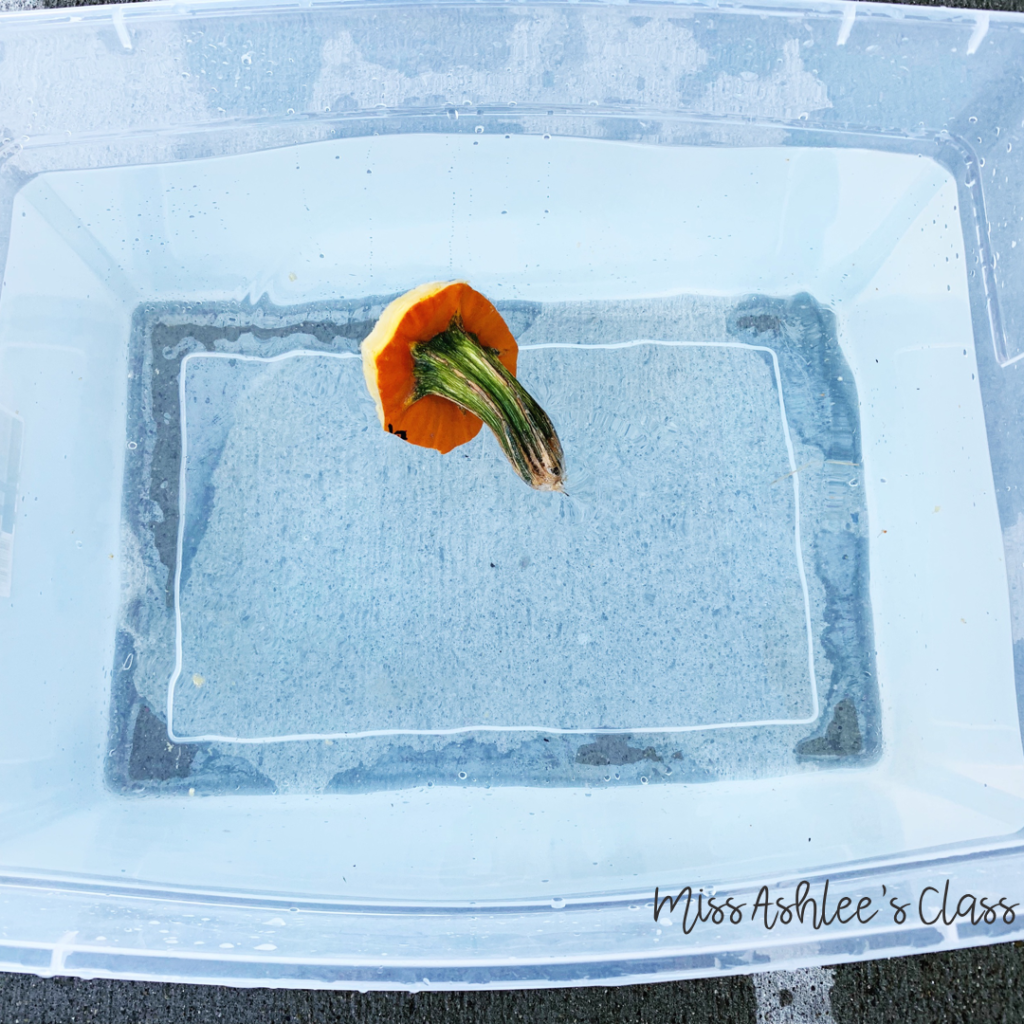
Scoop out the pumpkin pulp from the pumpkin and place it in the water. Observe.
Separate the seeds from the pumpkin pulp and place them in the water. Observe.
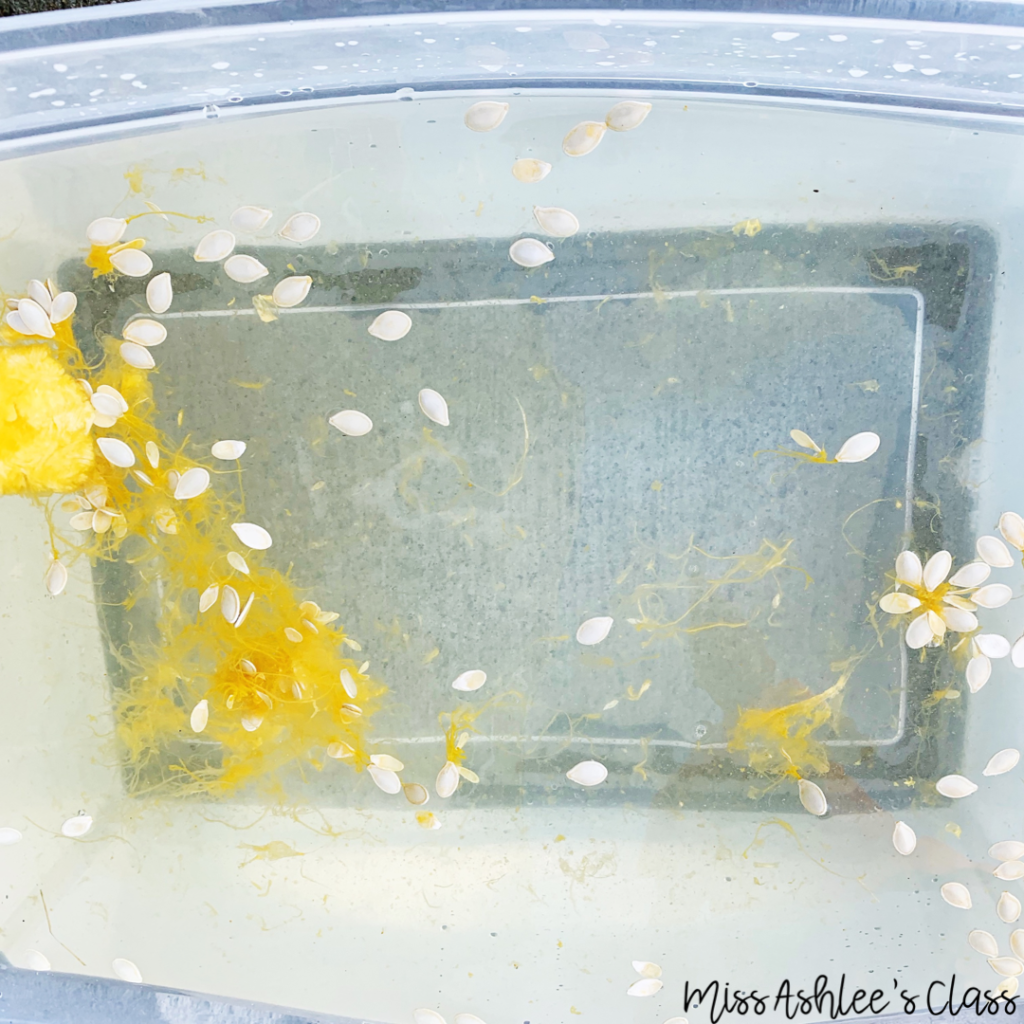
Step 4: Collect Data
We recorded our observations in this fun Pumpkin Observation Flap Booklet. CLICK HERE to check it out!
Step 5: Conclusion
Well, half the class was pretty excited, because every part of the pumpkin and the whole pumpkin floated! The kids even tried pushing some of the parts down to the bottom of the tub and filling the pumpkin full of water, and everything still floated right up to the top!
So in conclusion, the pumpkin is LESS DENSE than the water.
To further extend the activity, send your students home with this question!
Do other fruits and vegetables sink or float? What about apples? Bananas? Grapes? Potatoes? Carrots? Lettuce?
Interested in some other fun, picture-supported science experiments?
CLICK HERE to check out my Apple Science Experiment: Why do apples turn brown?
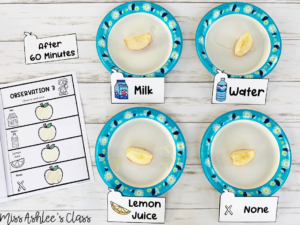
Check out some of my other Science Experiments in my TPT Shop:
I hope you enjoy this fun Pumpkin Science Experiment! Thanks for reading!

